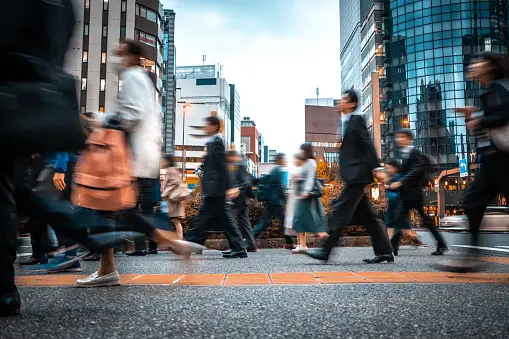All about Street Photographers
Table of ContentsStreet Photographers for DummiesStreet Photographers - TruthsAll About Street PhotographersAn Unbiased View of Street PhotographersHow Street Photographers can Save You Time, Stress, and Money.
, a genre of photography that records daily life in a public area. The actual publicness of the setup enables the digital photographer to take honest pictures of unfamiliar people, commonly without their knowledge. Road digital photographers do not necessarily have a social objective in mind, yet they favor to isolate and record minutes which could otherwise go undetected.Though he was influenced by most of those that influenced the road professional photographers of the 1950s and '60s, he was not chiefly thinking about recording the spirit of the road. The impulse to visually record individuals in public started with 19th-century painters such as Edgar Degas, douard Manet, and Henri de Toulouse-Lautrec, that functioned side by side with photographers trying to catch the significance of urban life.

Provided the great top quality of his photographs and the breadth of product, architects and artists frequently purchased Atget's prints to use as reference for their very own job, though commercial rate of interests were barely his main inspiration. Rather, he was driven to picture every last remnant of the Paris he liked.
All About Street Photographers
They reveal the city with his eyes. His job and basic understanding of digital photography as an art form functioned as motivation to generations of photographers that adhered to. The future generation of street professional photographers, though they likely did not describe themselves thus, was ushered in by the photojournalism of Hungarian-born digital photographer Andr Kertsz.
Unlike his peers, Brassa used a larger-format Voigtlnder camera with a much longer exposure time, forcing him to be extra calculated and thoughtful in his method than he may have been if using a Leica. (It is thought that he may not have had the ability to afford a Leica at that time, but he did, however, make use of one in the late 1950s to take colour pictures.) Brassa's photographs of the Paris underworld lit up by fabricated light were a discovery, and the compilation of the series that he released, (1933 ), was a major success.
Cartier-Bresson was a champion of the Leica electronic camera and among the initial digital photographers to maximize its abilities. The Leica allowed the professional photographer to communicate with the surroundings and to catch minutes as they happened - Street Photographers. Its relatively websites small dimension likewise aided the digital photographer fade into the history, which was Cartier-Bresson's navigate to this site favored technique
The Ultimate Guide To Street Photographers
It is as a result of this basic understanding of the art of photo taking that he is typically attributed with discovering the tool all over once more approximately a century given that its invention. He took pictures for more than a half century and influenced generations of digital photographers to trust their eye and instinct in the minute.
These are the concerns I shall try to respond to: And then I'll leave you with my own meaning of street photography. Yes, we do. Let's start with specifying what a definition is: According to it is: "The act of specifying, or of making something precise, unique, or clear".
No, absolutely not. The term is both limiting and misdirecting. Appears like a street photography must be images of a roads best?! And all street professional photographers, besides a small number of absolute newbies, will completely appreciate that a road is not the key component to road photography, and really if it's a photo of a street with perhaps a few boring individuals doing absolutely nothing of interest, that's not road digital photography that's a photo of a road.
He makes a valid factor do not you think? While I agree with him click here now I'm not certain "candid public digital photography" will catch on (although I do kind of like the term "candid photography") because "street photography" has been around for a long time, with lots of masters' names connected to it, so I think the term is right here to remain.
8 Easy Facts About Street Photographers Described
You can shoot at the beach, at an event, in a street, in a park, in a piazza, in a coffee shop, at a gallery or art gallery, in a city terminal, at an occasion, on a bridge, under a bridge ...
Yes, I'm afraid we scared no choice! Without policies we can not have a definition, and without a definition we do not have a style, and without a style we don't have anything to specify what we do, and so we are stuck in a "regulations meaning style" loophole! - Street Photographers
The 9-Minute Rule for Street Photographers
